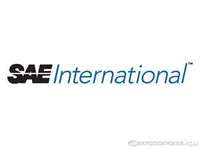New SAE International Book Offers Key Insights on Automotive Electronics and Electronic Reliability
 |
WARRENDALE, PA--Oct. 20, 2011: New car ads increasingly tout vehicles' electronic features for connectivity and infotainment, fuel economy, lower emissions, performance, and safety. Smartphones and other consumer electronic devices are growing in popularity and competition compels automakers to accommodate drivers and passengers who expect to use such devices in vehicles and help them do so safely. Electrical and electronics (E/E) technologies that help conserve fuel, lower emissions, and/or improve performance and safety include start/stop systems, eco-telematics, adaptive cruise control, and electric power steering. Government mandates in the U.S. and elsewhere include tire pressure monitoring and electronic stability control, and camera systems may soon be added to the list. These new features are creating increased demand for E/E components and systems.
Automotive E/E Reliability: Strategies for Keeping Pace in a Feature-Rich World , is a new book from SAE International that explores all facets of E/E systems. The author of the book, John Day, synthesized information and data into an easy-to-digest manuscript that gives a clear picture of the current state of E/E reliability and where the technology it is headed. In addition, he interviewed nearly 50 experts to obtain information to write the book.
The first section of the book opens with a discussion of the factors that are driving the development of E/E systems, primarily integrating consumer devices, interacting and sharing of vehicle data through in-vehicle networks, and a greater need to raise fuel economy, lower emissions, and improve safety. Author John Day then provides market research intelligence about how the market for E/E components and systems is growing, and what to expect in the coming years.
The next section of the book focuses on how reliability has improved over the years and the reliability challenges with newer technologies. Various tools that are used to validate components, systems, and processes are discussed. In addition, the book profiles the era of the 1960s through the 1980s, when the auto industry's mindset shifted from one that developed purely mechanical products, to one that embraced technologies from other industries to further develop and enhance its products. The book also presents the progress toward zero defects of components and connectors. Various quality processes, standards, and tools used in this quest are described, and improvements in wiring and connector technology are also discussed.
Day then shifts the focus from components to systems, and the importance of the entire E/E design chain. This follows logically into a chapter on defining and managing requirements for application development. From there, simulation and verification tools and techniques are detailed by those who use them every day.
The last section of the book focuses on the importance of collaboration to the development of E/E reliability: how the auto industry has migrated from using proprietary networks to collaborating through use of controller area network (CAN) and local interconnect network (LIN), and also AUTOSAR, the open and standardized automotive software architecture. Industry collaboration in the form of standards, languages and partnerships is also detailed. Day concludes the book with a summary of the work that lies ahead to improve E/E reliability.
This new book helps executives, decision-makers, and managers to quickly grasp the key drivers associated with E/E reliability in the automotive market. Academics who teach electronics and automotive engineering may also be interested in the book, as well as those in government who legislate and regulate automotive electronics.
Day edits John Day's Automotive Electronics News a website devoted to news and feature coverage of the automotive electronics industry. He has written extensively about electronics technology for publications including Electronic News, EE Times, Electronic Design, Design News, and Auto Electronics.
Book details:
- Published By: SAE International
- Published: November 2011
- Pages: 62
- Binding: Softbound
- Product Code: T-126
- ISBN: 978-0-7680-3499-8
- Price: $199.00, SAE International Member: $159.20-$189.05
SAE International is a global association of more than 128,000 engineers and related technical experts in the aerospace, automotive and commercial-vehicle industries. SAE International's core competencies are life-long learning and voluntary consensus standards development. SAE International's charitable arm is the SAE Foundation, which supports many programs, including A World In Motion® and the Collegiate Design Series.


